Post Category : Field Life Local Archaeology Method & Theory Special Finds
We Know How Old Stone Points Are, Right?
Back in September of 2017, I found what would probably be one of the coolest artifacts that I will ever find in my field survey career. My coworker Vince and I got up one fateful morning and set out on our four hour quad ride into one of the most beautiful areas in Northern Alberta: the Swan Hills. I have been working in the Swan Hills area for a few years now and every time I come back, I am always amazed by the broad vistas and pristine valleys that cut through this segment of the Alberta Foothills.
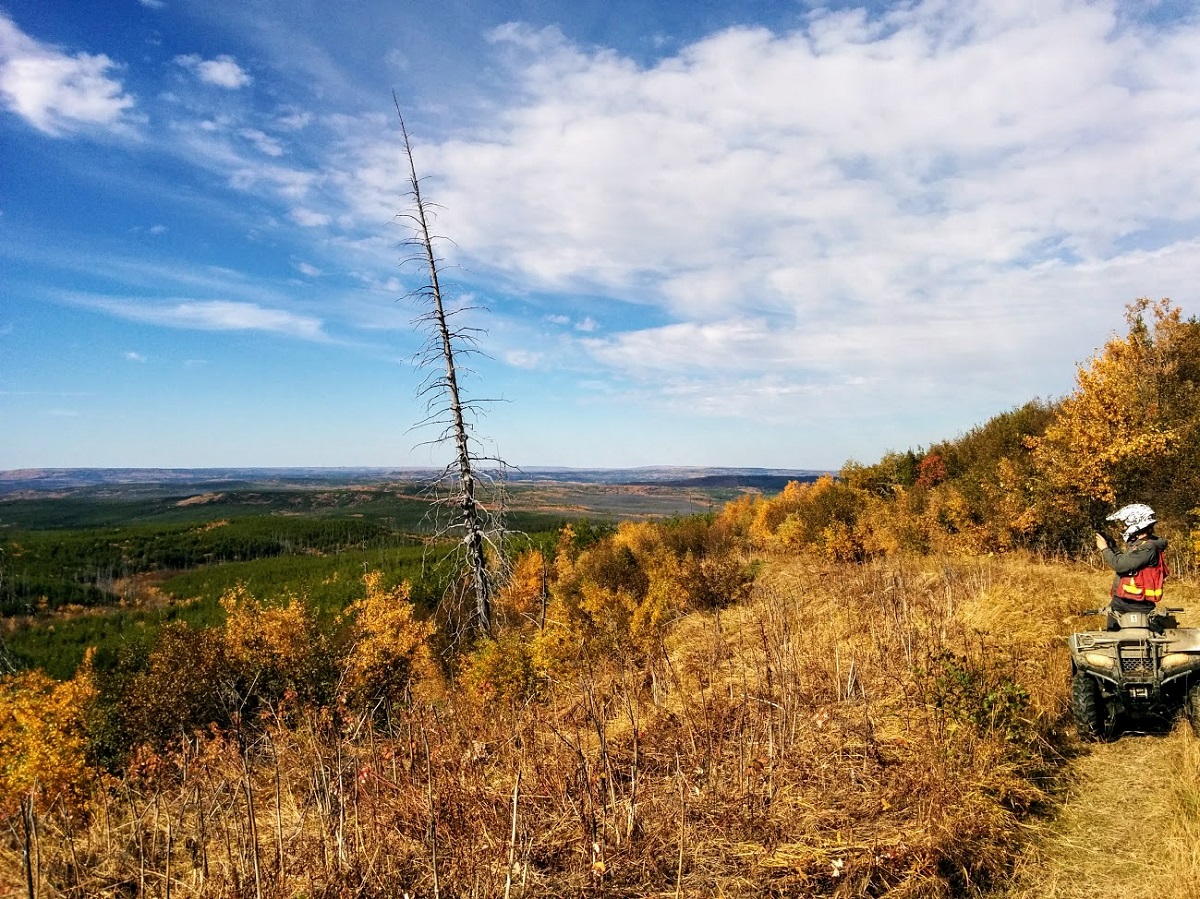
We were checking out a cutblock on the edge of a broad muskeg flat with a small stream. It was pretty swampy on the way in, but once we got closer to the stream, the land rose up into a nice, narrow little ridge that gave a good view over the stream. After walking around for a bit, Vince and I settled on a place to start digging. Normally, it takes a bit of time going through the screen before you can find the small stone flakes that we typically find. This time, I only had to flip over the root mat to see the top half of a stone blade stuck in the rootlets. A few seconds later, I pulled out the base of the same blade from the loose sediment, revealing a complete spear point buried only a few centimeters below the surface.
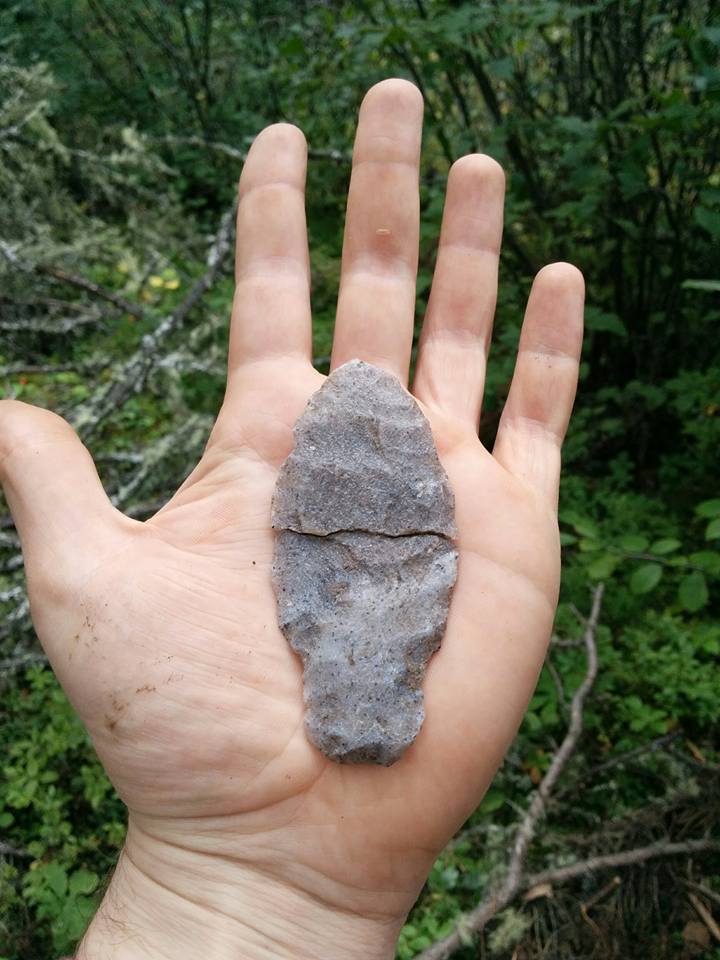
You can only imagine my excitement once I pulled this beautiful specimen out of the ground (I think I was making noises akin to Homer Simpson drooling over a doughnut). It is hard enough to find artifacts in the Boreal Forest, let alone to find a tool! My first thought as soon as I pulled it out was that I had found an Alberta Point. This is a type of projectile point that dates to around 9500 and 8000 years ago and is part of what is known as the Cody Complex. Alberta Points commonly have square stems that would have been hafted into a spear shaft, along with broad distinct shoulders and wider tapered blades. It seemed to be a good fit for the style of the point that I had found so I put Alberta Point in my notes and went about my day.
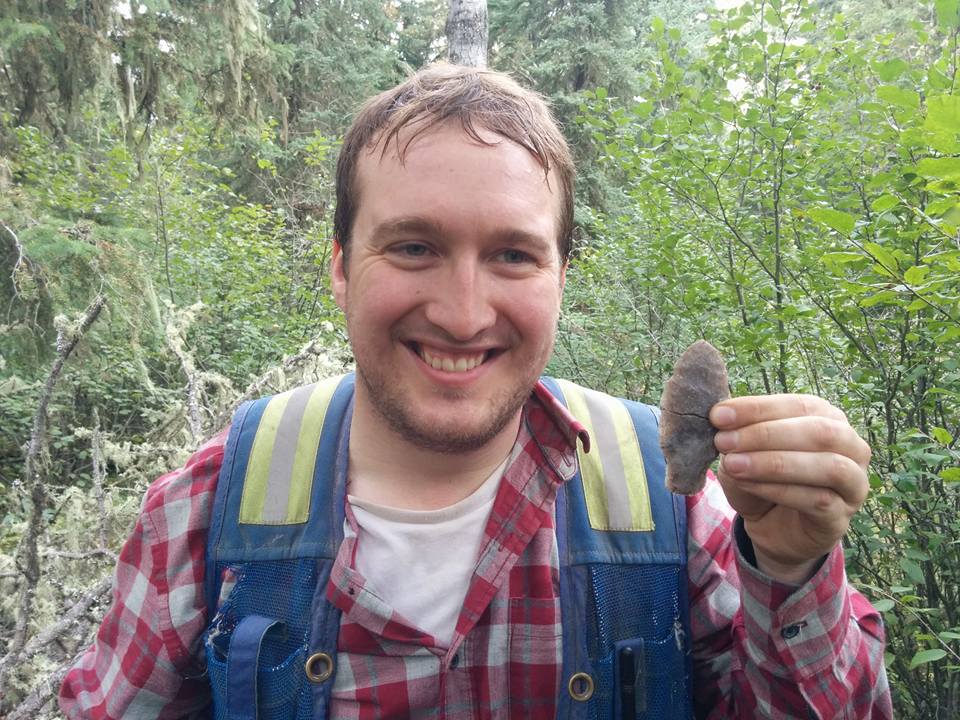
Back at the lab, I started flipping through my reference books. I began to realize that what I had found didn’t really fit with what we know about Alberta Points. The shoulders weren’t as square as other Alberta Points and the blade was a little too broad and less lance-like. I also noticed that the shape of the point closely resemble ones found at Hell Gap sites, dating to between 10,000 and 9,000 years ago (before the Alberta points and the Cody Complex). During this period, we see that First Nations ancestors were making similar large spear heads, but with a broader blade and slight, indistinct shoulders. So the spearhead that I found could also belong to this time period. However, the story doesn’t end there. To complicate matters more, there are also similar kinds of projectile points being made around Lake Athabasca in the northeast corner of the province. During the Early Taltheilei Phase (2600 to 1800 years ago), the caribou hunting people living on the shores of Lake Athabasca were making similar looking large spear and atlatl dart points. The point I found could fit into any one of these three possibilities.
So what kind of projectile point had I found? If we can identify the style, we can make inferences on the age and archaeological culture that was present at the site. Being able to place an age on a site is often difficult to do for Alberta sites, especially sites in the Boreal Forest. The lack of organic preservation at many sites means that radiocarbon dating is often not possible. Also, most archaeological sites in northern Alberta have very little stratigraphy, meaning that you will find 13,000 years of history in about 20 cm of soil. Even this artifact, which may be anywhere from over 10,000 to 2000 years old, was found only 5 cm below the surface. So if I were to determine how old this site was, I would need to be able to positively identify the type of projectile point that I had found. So what did I find? How was it made? Where did it come from? The answers to these questions can tell us about the people who made the artifact.
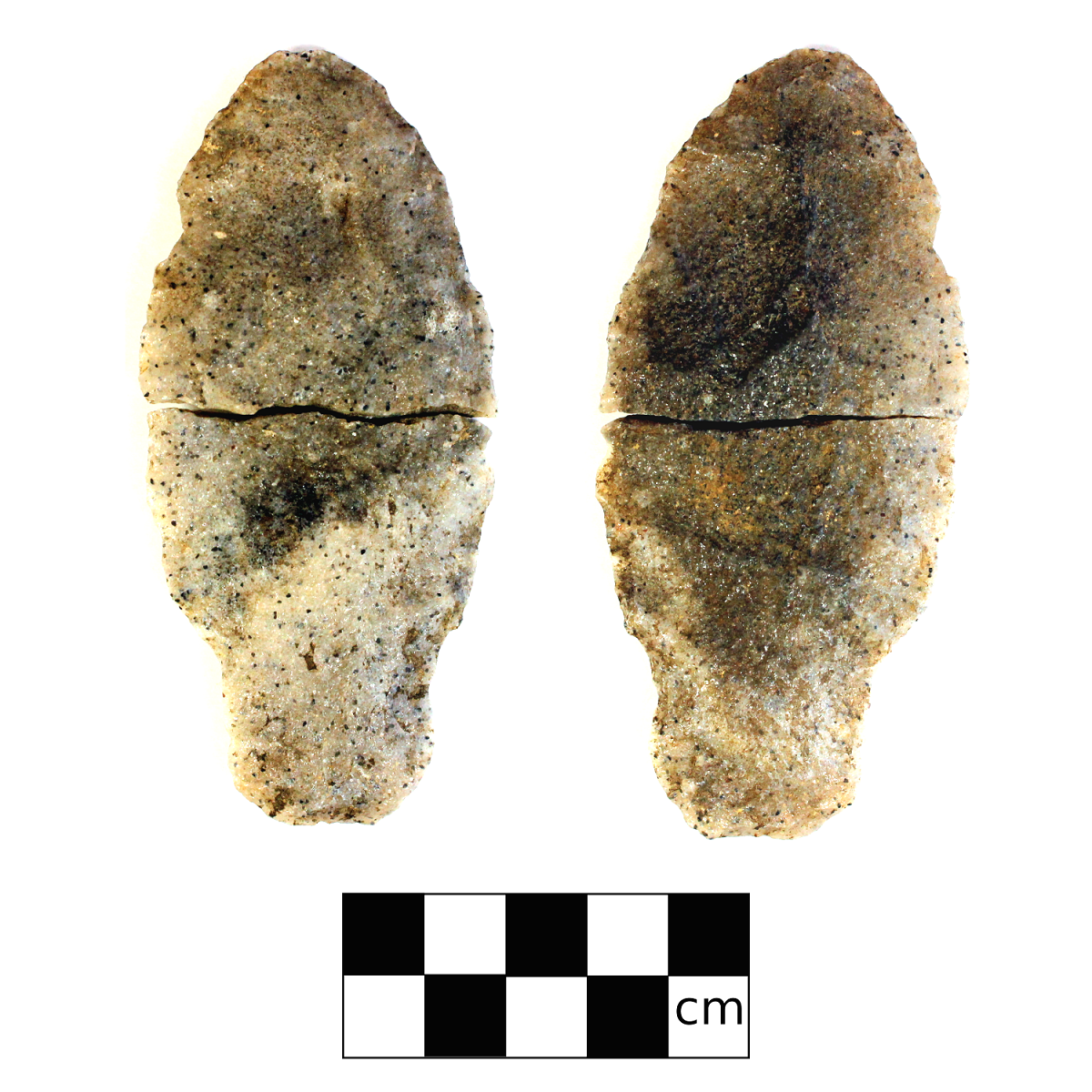
First off, the material. The point is made of fine-grained quartzite, a lithic raw material that was frequently used in Alberta all throughout history. There are a lot of advantages to working with quartzite. As a material it is very strong and durable, which means that the edge of the blade will hold longer than other materials like obsidian. This also means that it is extremely difficult to work with. When we try our hand at flintknapping today, we often start with obsidian, chert, or flint because these materials will fracture more easily and predictably than others. Pick up a raw quartzite cobble, and you’ll find that you be bruised from trying to crack it open.
Quartzite is also very common. Almost every stream, creek, and river valley is filled with a variety of quartzite cobbles. You don’t need to import it thousands of kilometers, unlike Knife River Flint or obsidian. Not all quartzite is the same quality, but there are well documented sources of high quality quartzite and sandstone throughout the province, like the top of the Grizzly Ridge by Swan Hills or in the Oil Sands around Fort McMurray.
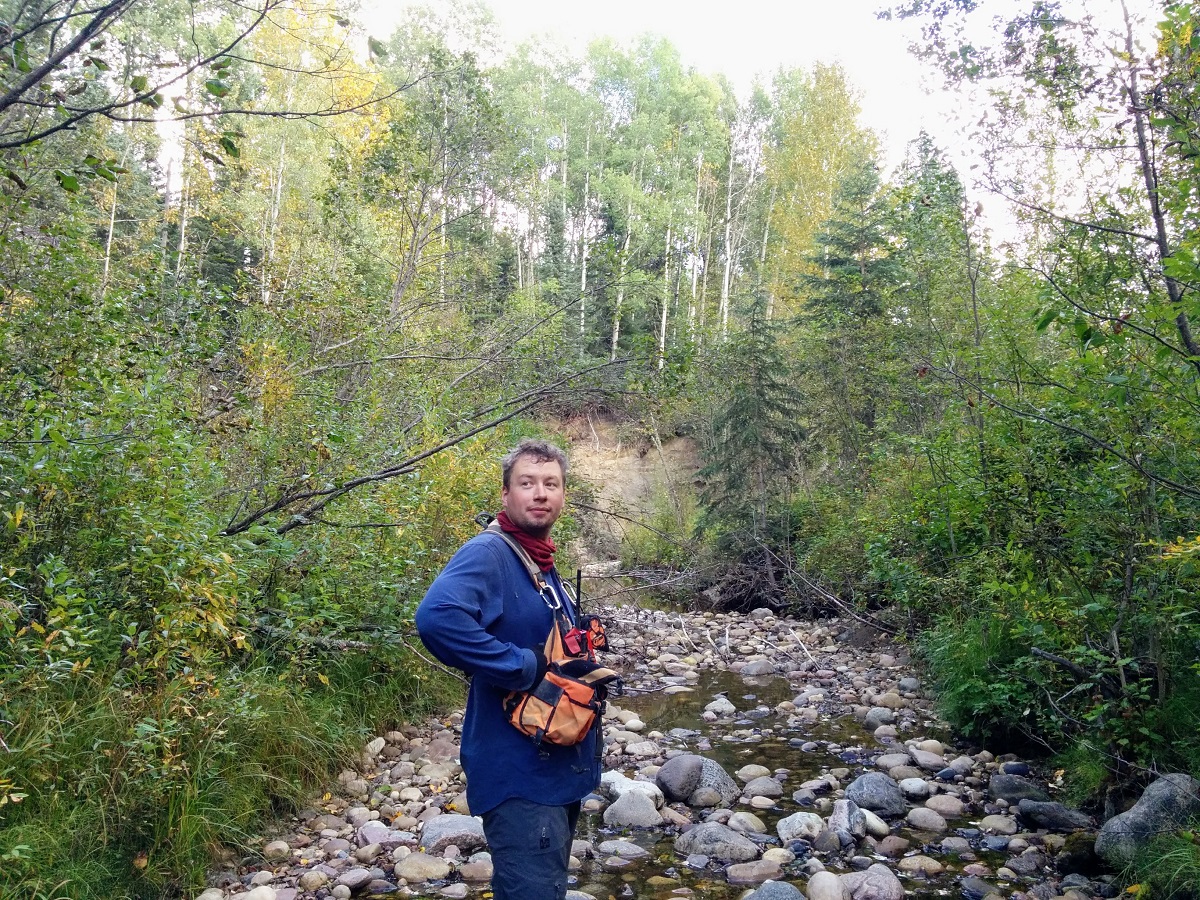
In fact, this point is made from a type of quartzite that is commonly known as ‘Salt-and-Pepper’ because of the small black specks in the largely white stone. This material has been found all over Northern Alberta, but it is most commonly reported around Fort McMurray. While no source has been officially documented, archaeologists who work in the Oil Sands region often report seeing raw cobbles and boulders of ‘Salt-and-Pepper’ quartzite in the creeks flowing into the Athabasca River. It is very likely then that this point was made from a cobble that came from the Fort McMurray region. Whether the person who made the point carried from Northeastern Alberta or if it made its way by trade, we don’t know. However, it does show us the vast ancient networks that connected the First Nations across Alberta.
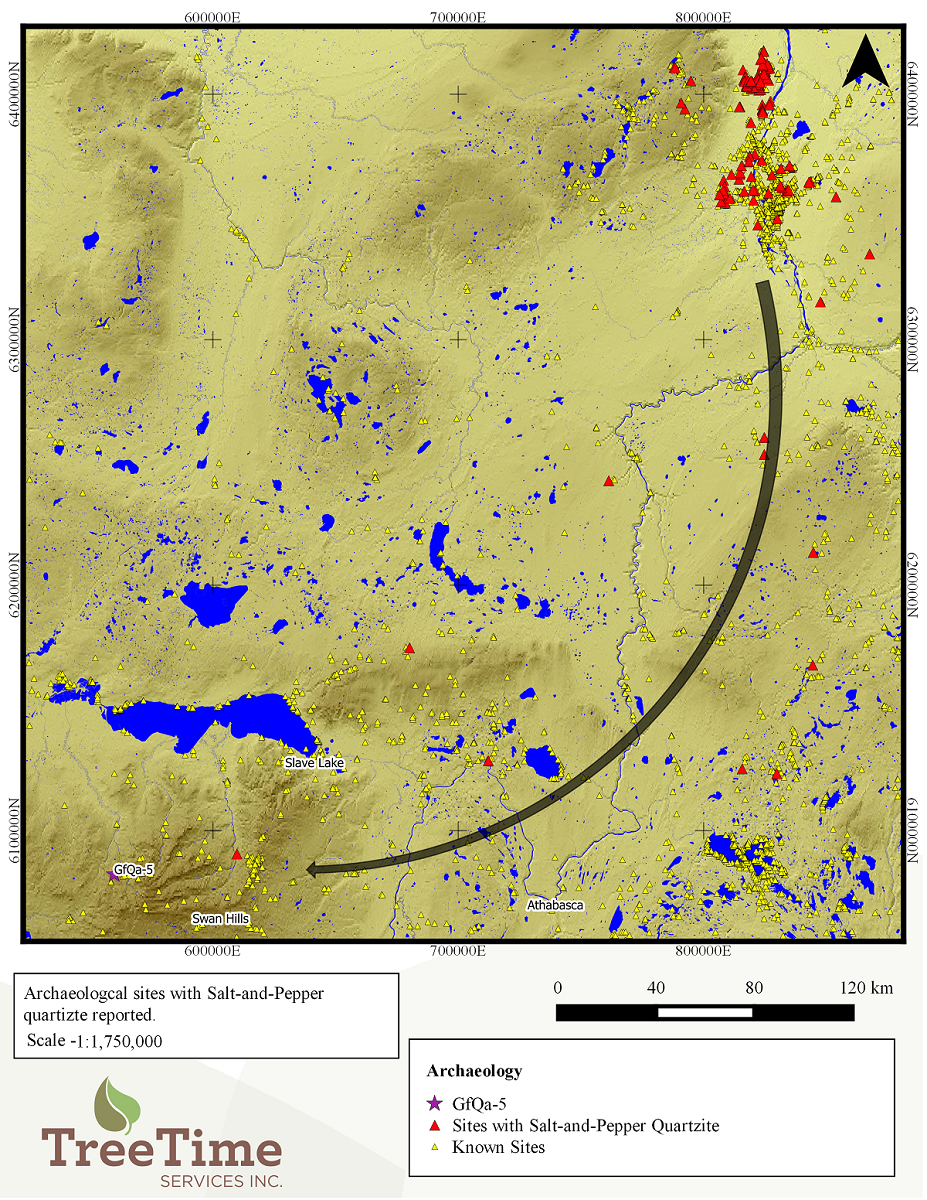
So we know where the raw material for the point came from, what about how it was made? What can the shape and design tell us about the people who made it? One way to study this is to look at the flake scars, the ridges and concavities left when pieces of quartzite were struck from the point. Most of the time with finished projectile point, or those that have reached the end of their life as a usable tool, we will see that the edges will be very uniform and straight, with small flake scars along the blade where the tool was resharpened. However, this artifact is very rough, the edges are irregular and chipped and the blade has large long flake scars covering the surface. Based on these traits, it appears that this point was unfinished, and looking at where the break is, it was likely broken when they were trying to make the blade thinner. This point is what would be called a ‘Preform’, a roughly worked projectile point that has not been attached to a haft yet. Preforms can take a variety of shapes and forms, but they often resemble the final point style.
So now that we understand that we are looking at an unfinished point, it better explains why the shape of the artifact does not perfectly match other Alberta points. However, that doesn’t help us to determine if it is an Alberta, Hell Gap, or Taltheilei projectile point. The implications of assigning the point one of these time periods is significant, because it would move the occupation of the site from a period where Giant Bison and Ice Age mammals roamed Alberta during the Hell Gap Phase, to an environment more similar to what we see today during the Taltheilei Phase. Personally, I think that the point from GfQa-5 is more similar to projectile points and preforms that have been dated to the Hell Gap period. The shape of the shoulders, base, and the blade all seem to better match the style of these points than Alberta Points, and the points found at Taltheilei sites tend to be smaller and narrower. A cache of similar looking spear points were found near Eaglesham in northwestern Alberta, and the archaeologists who studied these points concluded that they were likely unfinished Hell Gap points. It seems likely then that the spear point I found would fall into this time period. However, this is still based on very general characteristics, and it could still easily fit within all three of these categories. Until we have more information, and we excavate more archaeological sites, we are often left with our best guess.



